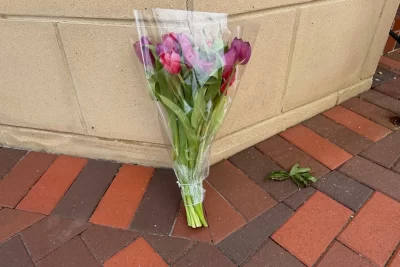
TUSAQUILLAS, Argentina — Irene Leonor Flores de Callata, 68, treks along a bone-dry riverbed, guiding a herd of llamas and sheep through stretching desert.
Flores de Callata’s native Kolla people have spent centuries climbing deep into the mountains of northern Argentina in search of a simple substance: Fresh drinking water.
Here, in one of the most arid environments in the world, it’s a life force that underpins everything.
In rainy months, the sacred lands surrounding their small adobe town of Tusaquillas well with water. In the dry months, families hike miles under the beating sun, hopeful their livestock can sip from a small plastic container, fed by a hose running high into the distant mountains.
Today is a lucky day. Their blue container is brimming with fresh water.Bu t communities like hers increasingly worry that their luck may run out. That’s because the parched waterways surrounding their town are intrinsically connected with spanning white salt flats below, subterranean lagoons with waters jam-packed with a material that’s come to be known as “white gold” – lithium.
In the “lithium triangle” – a region spanning Argentina, Chile and Bolivia – native communities sit upon a treasure trove of the stuff: an estimated trillion dollars in lithium.
The metal is key in the global fight against climate change, used in electric car batteries, crucial to solar and wind energy and more. But to extract it, mines suck water out of the flats, tethered to the lives of thousands of communities like Flores de Callata’s.
As the world’s most powerful increasingly look toward the Triangle, the largest reserve of lithium on Earth, as a crucial puzzle piece to save the environment, others worry the search for the mineral will mean sacrificing that very life force that has sustained the region’s native people for centuries.
“We will lose everything,” said Flores de Callata. “What will we do if we don’t have water? If the mines come, we’ll lose our culture, we won’t be left with anything.
At the same time Flores de Callata’s town and thousands of others across the “lithium triangle” have lived quietly off the sparse food and water their lands offer, the price for lithium skyrocketed in 2022.
Between 2021 and 2023, the price for one ton of lithium in U.S. markets nearly tripled, reaching a high of $46,000 a ton last year, according to a United States Geological Survey report. In China, the main customer of the region’s lithium, a ton of the metal went for a whopping $76,000 at its peak last year.
Leaders, mining executives and companies from across the world began to turn their heads. From the U.S. and China, they looked to the region’s barren deserts both as a source of wealth and an engine to power the transition to green energy.
U.S., President Joe Biden has pushed for a shift to more sustainable energy sources, like wind and solar, and aimed to have half of all new vehicle sales in the U.S. – around 8 million cars a year – be electric by 2030. All require lithium.
In late February, Biden’s top diplomat Antony Blinken underscored the importance Argentina’s lithium in a visit to the South American country.
“One of the most important to our shared future – in fact, one of the most important to the entire planet – is clean energy,” Blinken said. “Argentina is poised to play a critical role in building supply chains for critical minerals that will drive the economy of the 21st century, particularly things like lithium.”
The high demand surged global lithium production, but in recent months prices have significantly dipped due to a short-term oversupply in the metal and overestimates in electric vehicle purchases. Yet global consumption of the lithium only continues to rise.
The “white gold” they seek is contained in the hundreds of salt flats, or salares, speckling the region.
From afar, they look like fields of Arctic snow, but below are deep wells of salted groundwater packed with minerals. Unlike other forms of mining, lithium here is extracted not from rock, but rather from the brine water pumped from the salt flats.
The problem is that the salt flats also act as an essential part of a highly biodiverse ecosystem, say scientists like Ingrid Garcés, a hydrologist from Chile’s University of Antofagasta.




